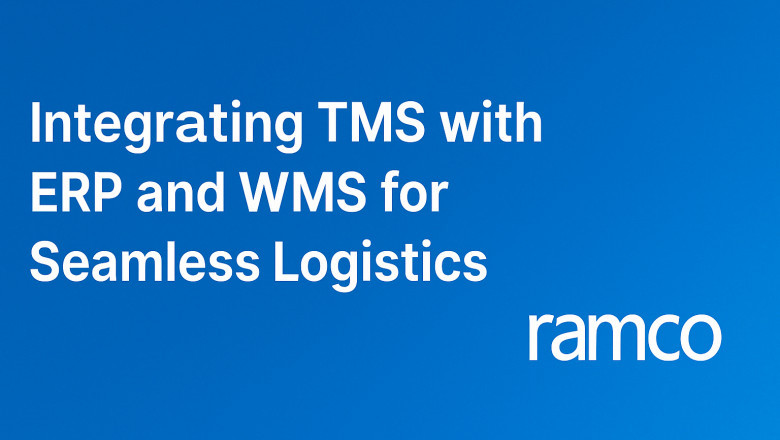views
Integrating TMS with ERP and WMS for Seamless Logistics
Let’s be honest—managing logistics today is a juggling act. Between keeping customers happy, cutting costs, and coordinating the chaos of shipments, warehouses, and data, things can get overwhelming. That’s where integration comes in. More specifically, integrating your transportation management system (TMS) with your enterprise resource planning (ERP) and warehouse management system (WMS). Sounds a bit technical but stick with me—it’s a game-changer.
What’s the big deal with integration?
Imagine this: You’ve got a killer TMS that handles all your freight planning and carrier relationships. Your ERP is the command center for everything from accounting to customer orders. And your WMS? That’s the brains behind your inventory and warehouse operations.
Individually, these systems do their jobs pretty well. But without talking to each other, they’re kind of like band members playing their own tunes without listening to the drummer. Integration is what syncs them up—so instead of chaos, you get harmony.
Why integrate TMS, ERP, and WMS?
Let’s break it down with a few real-world benefits:
1. End-to-End Visibility
When your TMS is integrated with ERP and WMS, you can see the whole picture in real time. Say a customer places an order. That info flows from your ERP into your WMS, triggering the picking and packing process. Meanwhile, your TMS starts working on the most efficient way to ship it. Everyone’s on the same page without you needing to manually update spreadsheets or chase down emails.
2. Better Decision-Making
Transportation management software generates a ton of data—freight costs, delivery times, carrier performance, etc. Integrating it with your ERP allows you to connect those dots with financial data, customer service metrics, and more. Now you’re not just shipping faster—you’re shipping smarter.
3. Fewer Errors, Faster Processes
Manual data entry? It's the Achilles’ heel of any logistics operation. Integrated systems eliminate double entry, reduce human error, and speed up the flow of information. Orders go out quicker. Shipments are more accurate. Customers are happier.
4. Cost Savings Across the Board
With a fully integrated transportation management system, you can optimize routes, consolidate shipments, avoid late fees, and even negotiate better rates with carriers. And when your ERP knows about these savings in real time, you can see the impact on your bottom line immediately—not weeks later when the finance team catches up.
What does integration look like?
It can be as simple as APIs connecting your TMS to your ERP and WMS, or as complex as a full middleware solution that manages data flow between systems. The key is choosing transportation management software that plays well with others. Look for TMS platforms with open architecture and strong support for integration.
And yes, the setup takes a little work. But trust me—it’s like upgrading from a flip phone to a smartphone. Once you’ve got that seamless communication flowing, you’ll wonder how you ever lived without it.
Final thoughts
In the fast-paced world of logistics, speed and accuracy are non-negotiable. Integrating your transportation management system with ERP and WMS doesn’t just help you keep up—it helps you get ahead. It’s about turning fragmented systems into a well-oiled logistics machine. Contact Ramco to integrate your TMS with ERP and WMS for seamless logistics today!






















Comments
0 comment